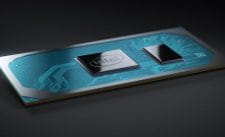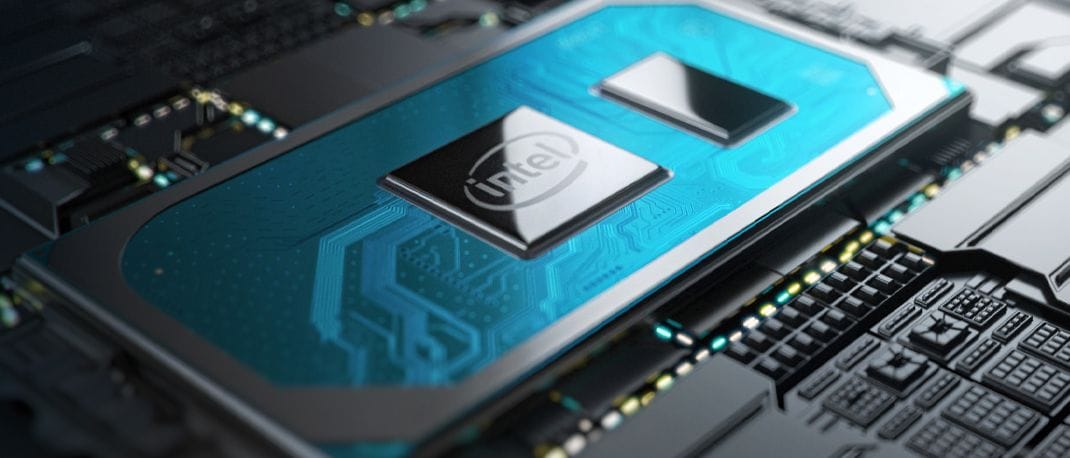Intel has always been people’s preference for laptop and desktop processors, and they are well-known for reliability and performance. Intel’s 10th generation processors have been in the market for a while now, and they have received a solid response from enthusiasts. Intel has managed to bring substantial changes to the 10th generation processors, with claims that their processors can take computing performance to the next level.
Intel’s 10th generation processors are significantly more powerful than the outgoing models. They are based on a 10 nanometer (nm) process which is a significant update from the 14nm process Intel has been using since 2014. Processors manufactured the new process should deliver better power-efficiency, improved performance and increased battery life.
Intel’s 10th generation mobile processors were launched in two variants. The entry-end Y series processors are designed for entry-level laptops, and they come in dual and quad-core variants. Intel claims, these processors can easily handle most tasks such as internet browsing, video playback and document editing. The U series processors are designed for mid-range laptops, and premium models in this range come with up to 6 cores. Intel claims, these processors bring significant performance improvements in mid-range laptops. This means, laptops priced between Rs. 30,000 to 45,000 should perform a whole lot quicker with these Intel 10th generation processors.

Intel recently expanded their 10th generation line-up, by launching the H series processors. These processors come as many as 8 cores, and they are designed both for gamers and media creators. Intel claims, the H series processors deliver up to 54 per cent better gaming performance and up to 2 times faster 4K rendering than the previous generation processors. The Intel 10th generation processors are available in many models. Here are some of the popular Intel Core 10th generation processors available in today’s laptops. You can use this to find a laptop that best suites your requirements.
Intel Y Series
|
Model No |
No of cores |
Max Turbo Frequency |
Processor Base Frequency |
Processor Graphics |
|
Intel Core i3-1000G1 |
2 |
3.2GHz |
1.1GHz |
Intel UHD |
|
Intel Core i3-1000G4 |
2 |
3.2GHz |
1.1GHz |
Intel Iris Plus |
|
Intel Core i5-1030G4 |
4 |
3.5GHz |
0.7GHz |
Intel Iris Plus |
|
Intel Core i5-1030G7 |
4 |
3.5GHz |
0.8GHz |
Intel Iris Plus |
|
Intel Core i7-1060G7 |
4 |
3.9GHz |
1.1GHz |
Intel Iris Plus |
|
Intel Core i7-1065G7 |
4 |
3.9GHz |
1.3GHz |
Intel Iris Plus |
Intel U Series
|
Model No |
Model No |
Max Turbo Frequency |
Processor Base Frequency |
Processor Graphics |
|
Intel Core i5-10210U |
4 |
4.2Ghz |
1.6GHz |
Intel UHD |
|
Intel Core i7-10570U |
6 |
4.7GHz |
1.1GHz |
Intel UHD |
Intel H series
|
Model No |
No of cores |
Max Turbo Frequency |
Processor Base Frequency |
Processor Graphics |
|
Intel Core i5-10300H |
4 |
4.5GHz |
2.50GHz |
Intel UHD |
|
Intel Core i7-10750H |
6 |
5.0GHz |
2.50GHz |
Intel UHD |
|
Intel Core i9-1090HK |
8 |
5.30GHz |
2.40GHz |
Intel UHD |
Intel’s 10th gen processors now also come with built-in Thunderbolt 3 support. Thunderbolt 3 is capable of transmitting data at speeds of up to 40Gbps, which is a lot quicker than USB 3.1’s 10Gbps and USB 3.0’s 5Gbps. You can use Thunderbolt-based storage devices to quickly backup your computer and transfer data in no time. The Thunderbolt 3 port also lets you connect multiple 4K displays and even external graphics cards, that can quickly turn your laptop into a gaming machine. Intel’s 10th generation processors now also come with inbuilt Wi-Fi 6 support. Wi-Fi 6 is the newest Wi-Fi standard that offers greater data transfer speeds and an overall better bandwidth. This means, you can expect faster downloads, better low latency gaming along with enhanced security features. Intel claims, the new Wi-Fi standards also consume less power, which also helps to achieve a longer battery life.

Intel has also made changes to improve the graphics performance of the 10th generation Core processors. Mid and high-end 10th generation processors now come with Intel Iris Plus integrated graphics, that should give significant boost over Intel’s UHD graphics. Intel claims these improvements should allow for a smother full HD gaming experience while playing games such as Fortnite. These graphics solutions should handle titles such as Counter-Strike: Global Offensive, Dota 2 with ease. It should also result in smooth video playback and better performance while using photo and video editing tools such as Adobe Photoshop and Premiere Pro.
Intel has also added VESA’s adaptive sync standard that helps to dynamically adapt the display refresh rate for a smooth and stutter-free gaming experience. Intel has also focused on improving the AI performance of their 10th generation chips. They have added a dedicated instruction set known as Deep Learning Boost (DLB), to carry out AI workloads efficiently. This is useful for people learning or working with Machine Learning and AI-based analytics.
The 10th generation Intel processors now also come with Turbo Boost Max Technology 3.0. This feature optimises performance by identifying processor’s fastest core and directing crucial workload to them. Intel has also improved the thermal efficiency of the 10th generation processors, to keep the temperatures low, ever over prolonged usage. The Intel 10th generation processors bring significant performance improvements. Intel has also recently announced their 11th generation of processors, which also promises to bring notable performance improvements. It may take months to see laptops equipped with the newer generation chipsets, but till then laptops with Intel’s 10th generation processors remain a solid option for absolutely all kinds of work and play.



